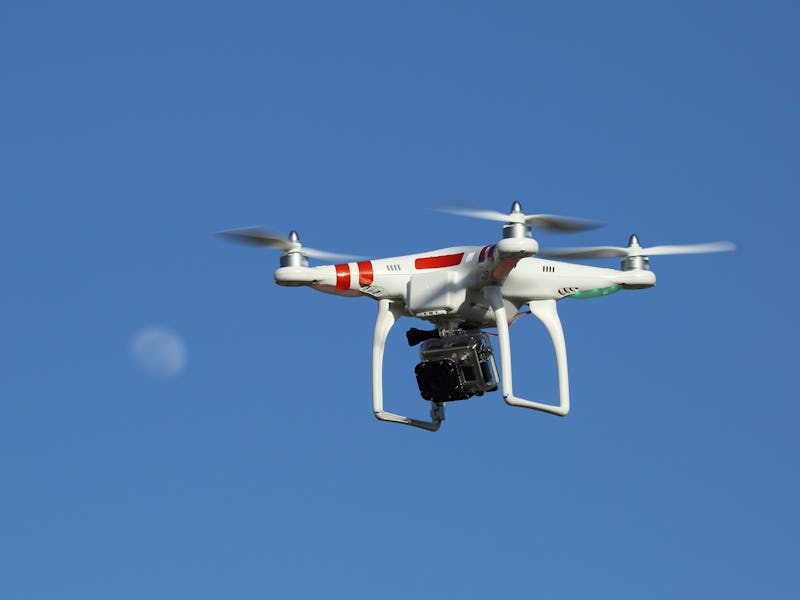The Federal Aviation Administration has never confirmed any incident where a civil aircraft and a civil drone collided. That’s according to an agency report released this week, which reveals that despite pilots claiming drones have hit their aircraft before, and a sharp uptick in the number of reported drone sightings by air traffic facilities, every investigation into reported drone collisions always concluded that something else hit the aircraft.
“Although the data contain several reports of pilots claiming drone strikes on their aircraft, to date the FAA has not verified any collision between a civil aircraft and a civil drone,” the agency said in its statement.
The number of possible drone sightings increased dramatically, though. In the period from February to September of last year, agency-controlled air traffic facilities made 1,274 reports of drone sightings. In the same period in 2015, that figure was 874, which means sightings increased the following year by 45.8 percent.
These are only reported sightings, but the increase would make sense as drone sales grew over that period. NPD research shows U.S. drone sales in the 12 months prior to April 2016 reached nearly $200 million, a 224 percent increase when compared to the same period the previous year. NPD retail tracking also showed the average price spent on a drone dropped 14 percent to $176.19 year-over-year.
These drone sightings are only going to get more commonplace in the future. Statista projects global consumer drone shipments of 67,690 in the year 2021, up from 6,403 shipments in 2015.
Drones on display at InterDrone, an international drone conference on September 8, 2016 in Las Vegas, Nevada.
Drones have been something of a headache for the agency. In March last year, the agency reported that there were 582 drone incidents between the end of August 2015 through January 2016. An “incident” covers everything from a pilot seeing a drone to a pilot actively having to avoid a drone.
But so far, the agency has not found an incident where these new machines have harmed a pilot. In instances where pilots claimed a drone struck their aircraft, every investigation discovered that the collision was either from objects like wires or posts, birds sharing the same airspace, or a failure with the aircraft itself. But the agency is still urging caution around any drone operators considering the option of flying their drone in an unsafe area.
“Safely integrating unmanned aircraft into the national airspace system is one of the FAA’s top priorities, and the agency wants to send a clear message that operating drones around airplanes and helicopters is dangerous and illegal,” the agency said in its statement. “Unauthorized operators may be subject to stiff fines and criminal charges, including possible jail time.”
To stay on the right side of the law, the agency recommends using the B4UFLY app, for iOS and Android smartphones, that lets the user know whether there are any restrictions on flying in their current location. Oh, and don’t forget agency rules state the pilot needs to maintain sight with the aircraft, so no big adventures where you can’t see your drone anymore.
